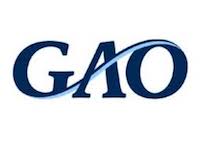U.S. Government Accountability Office Criticizes FCC Data on Tribal Broadband
According to the Federal Communications Commission (FCC), at least 35 percent of tribal residents do not have access to fixed broadband. In comparison, only 7.7 percent of all U.S. residents lack access to fixed broadband, defined as minimum speeds of 25 Megabits per second (Mbps) download and 3 Mbps upload.
However, a recent report from the Government Accountability Office (GAO) concludes that this disparity is probably even starker.
The report, prepared at the request of the U.S. Senate Committee on Indian Affairs, finds that the FCC’s broadband data is inadequate and inaccurate. As a result, the data overstate sbroadband availability nationwide, particularly in tribal areas. Additionally, the report notes that the FCC fails to engage tribes in the data collection process.
Bad data isn’t just a bureaucratic recordkeeping problem. Tribal communities can miss out on federal funding to improve connectivity in unserved and underserved areas if the FCC data shows that they already have access to broadband.
Reporting Methodology Overstates Access
For the most part, the FCC gets its information on fixed broadband availability through Form 477. Internet service providers (ISPs) submit the form twice a year, listing the census blocks they serve and the highest speeds they advertise.
This data collection methodology inherently exaggerates Internet access. Since ISPs report coverage by census block, an entire block is considered served even if the provider offers, or could offer, access to only one home.
 Many tribal lands are located in rural areas, the report notes, where large census blocks result in vast overstatements of broadband availability. Census blocks can also contain both tribal and non-tribal lands, further obscuring the extent to which tribal communities lack connectivity.
Many tribal lands are located in rural areas, the report notes, where large census blocks result in vast overstatements of broadband availability. Census blocks can also contain both tribal and non-tribal lands, further obscuring the extent to which tribal communities lack connectivity.


